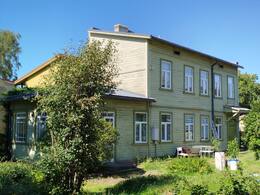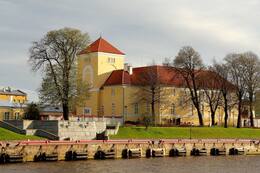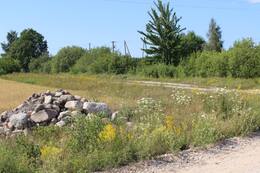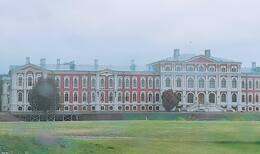Latvijos Centrinė Taryba (LCP)
II Antrasis pasaulinis karas, III Nacionaliniai partizanai, IV Sovietų okupacija
Latvijos politikų įkurta nelegali pasipriešinimo judėjimo organizacija, siekiant atkurti faktinį nepriklausomos ir demokratinės Latvijos valstybės suverenitetą, remiantis 1922 m. Konstitucija; įkurta 1943 m. rugpjūčio 13 d. Rygoje, nutraukė veiklą tremtyje – Vokietijoje 1950 m. ir Švedijoje 1951 m.
Ypatingą vietą LKP politinėje veikloje užima 1944 m. kovo 17 d. memorandumas, kurį pasirašė 188 Latvijos visuomenės ir politiniai veikėjai.
Antrojo pasaulinio karo pabaigoje tarp nacių okupuotos Latvijos ir Švedijos vyko neteisėtas Latvijos pabėgėlių judėjimas laivais, kurį organizavo LCP.
Daugiau informacijos šaltinių
https://enciklopedija.lv/skirklis/171407-Latvia-Centre%C4%81l%C4%81-padome
(anglų k. – Central Council of Latvia, Russian – Central Council of Lettland, Lettische Zentralrat, French – Central Council of Lettonia, Latvian – Central Council)
Susijusi laiko juosta
Susijusios vietos
Pastatas Ventspilyje, kuriame 1944 m. gyveno LKP ryšininkė Valentina Jaunzeme (Lasmanė)
Name Lauku gatvėje 4, Ventspilyje, gyveno mokytoja Valentina Lasmane (mergautinė pavardė Jaunzeme) (1916–2018). Ji buvo Latvijos komunistų partijos ryšių palaikymo pareigūnė ir Ventspilio ryšių grupės narė. Po Antrojo pasaulinio karo gyveno Švedijoje.
Ji surinko 130 valtimis pabėgusių asmenų liudijimus leidinyje „Per jūrą 1944/1945“ (Stokholmas, 1990), tačiau pačios V. Lasmane gyvenimo istoriją galima perskaityti knygoje „Naktis nebe skirta tik miegui“ (Ryga, 2020). 2000 m. jai buvo įteiktas Trijų žvaigždžių ordinas. Ji mirė 2018 m., būdama 102 metų, Stokholmo priemiestyje Täbyje.
Pastatas Ventspilyje, kuriame 1944–1945 m. gyveno Latvijos komunistų partijos atstovas ir pabėgėlių laivų eismo Kuržemėje organizatorius dr. Valdemārs Ģinters.
Namas Katrīnes g. 4, Ventspilis, kuriame dirbo archeologas Valdemārs Ģinters.
Nuo 1944 m. spalio iki 1945 m. gegužės 8 d. LCP atstovas Kuržemėje buvo archeologas Valdemārs Ģinters (pravardės „Gydytojas“, „Sodininkas“) (1899–1979). Latvijos Nepriklausomybės karo dalyvis, Valstybinio istorijos muziejaus direktorius ir Latvijos universiteto docentas. Apdovanotas Lačplėšio karo ordinu ir Trijų žvaigždžių ordinu. Vienas iš LCP 1944 m. kovo 17 d. memorandumo signatarų. Po Antrojo pasaulinio karo gyveno Švedijoje. 1949–1979 m. buvo Latvijos nacionalinio fondo valdybos pirmininkas.
Kalėjimas Livonijos ordino pilyje Antrojo pasaulinio karo metu
1944–1945 metais Livonijos ordino pilyje įkurtame kalėjime buvo sulaikyti keli LKP Ventspilio ryšių grupės nariai ir pabėgėlių valčių operatoriai.
Laivininko Žanio Fonzovo prisiminimai: „Iš Švedijos išplaukė du laivai – „Krīvs“ ir „Zvejnieks“. Aš buvau „Zvejnieks“, o įguloje buvo Saulītė ir Grunti. [...] Oras buvo gražus, plaukiau taip nepastebimai, nelabai aukštai. Iškart pamačiau – plaukiau Morzės abėcėle. Laivas artėjo. Nusileidau į mašinų skyrių, nes be Saulytės dokumentų, maišelyje turėjau ir atvykusiųjų laiškus giminaičiams Latvijoje bei surinktus ginklus. Į tą ginklų maišą sumečiau laiškus ir dokumentus, o viską permečiau už borto... Kas tada! Laivas priartėjo prie mūsų, o vokiečiai paprašė mūsų vairavimo leidimų. [...] Taigi spalio 21 d. vokiečiai mus su visu „Zvejnieku“ nuvežė į Ventspilį. Nuvežė mus į kalėjimą. Kambaryje buvo apie 30 žmonių. Ant nugaros turėjau avikailio paltą, pasitiesiau jį ant grindų ir apsivilkau pats, bet praėjusią naktį nemiegojau. Antrą ar trečią dieną... Jie iškvietė mus apklausai. Buvome susitarę prisipažinti, kad esame pabėgėliai, keliaujantys į Vokietiją. Aš tik norėjau nuvykti į Lielirbę sekti savo draugo. Atrodo, kad jie tada mumis patikėjo. [...] Tačiau tada situacija Ventspilyje pasikeitė: miestą perėmė karinė administracija, ir mes buvome antrą kartą iškviesti apklausai. Buvo dar blogiau, nes mums parodė švediškų degtukų dėžutę ir kronos monetą, kurie neva buvo rasti laive. Vienas iš tardytojų buvo latvis, ir jis net nukirsdino mums galvą už tai, kad pasakėme visą tiesą. Matėme, kad pasaka baigėsi, tiesiog turėjome prisipažinti.
Kelias į „Grīnieki“ namus Vārvės valsčiuje
Kelias į „Grīnieki“ namus Vārvės valsčiuje, kur 1944 m. buvo įsikūrusi viena pagrindinių Kuržemės pakrantės pabėgėlių gyvenviečių.
Laivininko V. Jurjako prisiminimai: „Įėjus į „Grīniekių“ kiemą, viskas atrodo labai įprasta. Ramus kaimo namas, nė gyvos dvasios, tikriausiai žmonės saulėje. [...] Paaiškėjo, kad ne tik „Grīniekių“ gyvenamasis namas buvo pilnas žmonių, bet ir visi pastatai buvo pilni. Tvartas, klėtis, šieno palėpė ir pirtis. Sutikau vieną ar du pažįstamus, nes atėjo laikas palikti mūsų žemę. [...] Mitybos situacija nebuvo kritinė, bet gana prasta. [...] Vakare pabėgėlių karavanas pradėjo judėti link jūros kranto. Iš anksto visus perspėjau, kad neitų iš krūmų prie jūros kranto, nes netoliese buvo pakrantės sargybos apkasai ir stebėjimo postai. Tai buvo didelis karavanas, nes apie 200 žmonių ėjo į jūros krantą. Nebuvo jokios vilties, kad visi atvyks laiku. Vakaras nebuvo labai tamsus, ir galėjau apžvelgti visos grupės veiklą. Įspūdingiausi buvo dideli „Kai žmonės gyveno „Grīniekiuose“, jų nematė, bet dabar, kai jie buvo atvežti į...“ šviesą, jie matė tik tai. Vien prekėms reikėjo visos valties. Prekių prikrovėme 3–4 dviejų arklių vežimus, o po jų – žmones. [...] Ilgai laukėme valties, bet ji neatvyko. Visas karavanas turėjo grįžti atgal. Buvo labai tamsu.“
Laikinosios pabėgėlių prieglaudos „Vārves būda“
„Vārves būdas“ – vieta Ventspilio savivaldybėje, kuri 1944 m. buvo laikinai apgyvendinta Latvijos pabėgėliams, laukiantiems laivų iš Gotlando.
Laivininko V. Jurjako prisiminimai:
„Mano įbrolis su šeima buvo atvykęs pas mus iš Rygos, ir kai atėjo žinia, kad Vārvėje laukiama valties, sujungiau šiuos žmones su policijos viršininko Jasūno grupe ir visi išvykome į Vārvę. Signalų laukėme iki vėlyvos nakties, bet valtis taip ir neatvyko. Taip laukėme visą savaitę. Pradėjo lyti. Žmonės iš paklodžių statė palapines, todėl šią vietą pavadinome „Vārvės trobelėmis“. Mudu su žmona dieną daugiau laiko praleisdavome Ventspilyje ir galiausiai turėjome galvoti, kaip pristatyti maistą laukiantiems. Pamenu, vieną naktį su žmona dviračiais vežėme jiems karštas virtas bulves per mišką. Smarkiai lijo, žaibavo, o šiltos bulvės labai patiko išsibarsčiusiems laukiantiems žmonėms. Vārvės miškininkas netyčia atrado šią slėptuvę, bet, pažadėjęs jam perkėlimo galimybę, atėjo padėti. Vokiečiai pradėjo žvalgytis po pakrantės gyventojų namus, ieškodami šauktinių. Du jauni žmonės buvo pagauti... miškas netoli „Vārvės trobelių“. Todėl ši vieta nebegalėjo būti saugi šiems daugiau nei penkiasdešimčiai čia merdinčių žmonių.
Jūrkalnėje pabėgėlių atminimo ženklas „Vilties burė“
Atminimo ženklas „Vilties burė“ skirtas Antrojo pasaulinio karo pabėgėliams, 1944 ir 1945 m. laivu perplaukusiems Baltijos jūrą į Gotlando salą Švedijoje. Memorialas yra Osvalkuose, kopose tarp jūros ir Ventspilio–Liepojaus greitkelio, netoli viešojo transporto stotelės „Kaijas“. Jį sukūrė skulptorius Ģirtas Burvis, kuris jį įgyvendino kaip vilties burę, simbolizuojančią Latvijos pabėgėlių atminimą.
Nuo 1944 m. rudens iki 1945 m. pavasario, bijodami atnaujintos sovietų okupacijos, bet nenorėdami evakuotis į nuniokotą ir grasinamąją Vokietiją, kai kurie Latvijos piliečiai bandė jūra pasiekti artimiausią neutralią šalį – Švediją. Kai kuriuos laivus organizavo Latvijos centrinė taryba, padedama Vakarų sąjungininkų šalių, todėl Jūrkalnės valsčiuje atsirado vienas didžiausių pabėgėlių koncentracijos taškų. Be Latvijos centrinės tarybos organizuotų laivų, per jūrą buvo perplaukta ir kitų laivų. Manoma, kad jūrą pavyko perplaukti apie 5000 žmonių. Žuvusiųjų skaičius nežinomas, nes nebuvo registruojami pabėgėliai, paliekantys Kuržemės pakrantę.
Kelionės buvo pavojingos, nes pabėgėliams grėsė vokiečių patruliai pakrantėje ir jūroje, jūrų minos, sovietų lėktuvai ir karo laivai, taip pat audros, nes kirtimai dažnai vykdavo netinkamais ir perkrautais kateriais bei valtimis, neturint pakankamai kuro ir maisto atsargų, jūros žemėlapių ir navigacijos prietaisų. Išvykimai iš Latvijos buvo vykdomi slapta. Laivų tikslas buvo Gotlando sala, o kelionės dažniausiai prasidėdavo Kuršo vakarinėje pakrantėje (nuo Jūrkalnės iki Gotlando yra 90 jūrmylių arba apie 170 kilometrų tiesia linija).
„Bambalių“ namai – viena iš pagrindinių laivais išplaukusių pabėgėlių apgyvendinimo vietų
Restauruoti „Bambalių“ namai Ošvalkuose, Jūrkalnės valsčiuje, kurie 1944 m. buvo viena pagrindinių valtimis išplaukusių pabėgėlių apgyvendinimo vietų Kuržemės pakrantėje.
Valčių pabėgėlio Kārlio Dravinio prisiminimai: „„Bambaliai“ buvo seni, maži, labai apgriuvę namai Jūrkalnės valsčiuje, maždaug už 40 kilometrų nuo Ventspilio. [...] Drėgnoje vietoje plytėjo nedideli laukai, bet kitoje pusėje juos apaugusi kopa apvyniojo. Už jų šiek tiek čiurlenėjo jūra – namai buvo prie pat jūros. Kitoje pusėje, už pusės kilometro, ėjo Paviluosto–Užavos plentas, bet kelias iki namų juo nebuvo lengvas, todėl vokiečiai čia negalėjo būti kasdieniai svečiai. Vieta, kur laukė valtys, buvo lengvai pasiekiama – nedidelė miško proskyna ant aukšto kranto. [...]
„Bambalių“ savininkė ir jos grupė, kurios taip pat laukė „vandens judėjimo“, gyveno dviejuose kambariuose, nukreiptuose į jūrą, o pabėgėlių grupė gyveno kitame namo gale, taip pat dviejuose kambariuose. Jie dalijosi virtuve. Koridorius tarp dviejų galų buvo prikimštas daugybės pabėgėlių daiktų. Kambariai buvo prikimšti šiaudų, kurie buvo išdėlioti palei sienas. Kiekvienoje kambario pusėje buvo po vieną lovą, kurioje miegojo motina su vaikais. Šiaudinės lovos dieną buvo užklotos paklodėmis ar kuo nors kitu. Dieną jie išeidavo jose pasėdėti ar pamiegoti, nes daugiau nebuvo kur apsistoti. [...] Dienos slinko monotoniškai, viena po kitos. Jie keldavosi pagal komandą, neskubėjo. Kai bendri pusryčiai buvo pavalgę, vieni eidavo žaisti kortomis, kiti ėmėsi būrimo, treti bandė skaityti. Vieniems reikėjo atlikti namų ruošos darbus – atnešti malkų, vandens.
„Laukgalių“ namai, rašytojo Kārlio Skalbės rezidencija
Jūrkalnės valsčiaus „Laukgaliai“, vieta, kurioje rašytojas Kārlis Skalbe apsistojo 1944 m. spalio–lapkričio mėnesiais, laukdamas pabėgėlių laivo į Švediją.
Rašytojas Kārlis Skalbe (1879–1945) buvo Latvijos laikinosios nacionalinės tarybos ir Latvijos liaudies tarybos narys, Latvijos Respublikos Konstitucinio susirinkimo ir I bei IV Saeimų deputatas. Vokiečių okupacijos metais jis buvo literatūrinio žurnalo „Latvju Mēnešraksts“ vyriausiasis redaktorius, vienas iš LKP 1944 m. kovo 17 d. memorandumo signatarų.
1944 m. lapkričio 11 d. ji pabėgo į Švediją. Mirė 1945 m. Stokholme.
Lietuvių karių kapai Zalkalno miške
Memorialas yra netoli Paviluostos paplūdimio apžvalgos bokšto kopose. Yra nuorodos į memorialą.
Antrojo pasaulinio karo pabaigoje Latvijoje taip pat buvo dislokuoti trys Lietuvos policijos batalionai – 5-asis, 13-asis ir 256-asis – kurie, atlikę sargybos pareigas ir kovų su sovietų partizanais bei Raudonąja armija Rytų fronte, nuo 1944 m. rudens dalyvavo Baltijos jūros pakrantės saugojime Kuržemėje.
1944 m. spalį visi trys batalionai, kuriuos sudarė 32 karininkai ir apie 900 instruktorių bei kareivių, buvo pavaldūs Vokietijos 18-osios armijos 583-iajam užnugario apsaugos būriui (Koruck 583). Šiam būriui buvo pavesta saugoti Kuržemės pakrantę nuo Liepojos iki Ventspilio. Visi trys Lietuvos batalionai buvo dislokuoti Paviluostos apylinkėse. 1944 m. gruodį 13-asis batalionas buvo perkeltas į Vokietijos 1-ąjį armijos korpusą prie Liepojos ežero.
Viena iš Lietuvos pakrančių apsaugos užduočių, be pasirengimo kovoti su priešo išsilaipinimais ir pranešti apie priešo laivus, buvo neleisti Latvijos pabėgėlių laivams plaukti į už 160 kilometrų esančią Gotlando salą, tačiau Lietuvos pakrančių apsaugos vyrai nesutrukdė pabėgėlių laivams išplaukti. Tačiau žinia apie Lietuvos pakrančių apsaugos pagalbą Latvijos pabėgėliams ir pačius lietuvius, besiruošiančius kirsti jūrą į Švediją, pasiekė ir vokiečius.
1945 m. sausio 10 d. buvo suimti 5-ojo Lietuvos policijos bataliono 1-osios kuopos kareiviai. Po to vyko daugiau nei savaitę trukę tardymai ir teismas, po kurio, kaip įspėjimas kitiems, buvo nuspręsta sušaudyti septynis Lietuvos kareivius ir vienuolika jų bendražygių įkalinti koncentracijos stovyklose Vokietijoje. Septynių Lietuvos kareivių (kuopos vado seržanto Macijauskio; kareivio Juozo Sendrjua; kareivio Vlado Salicko; Iono Bašinskio Krasausko ir dar dviejų nežinomų asmenų) egzekucija įvyko 1945 m. sausio 21 d. Paviluostos Zaļkalno pušyse.
1945 m. sausį 5-asis batalionas buvo išformuotas, o kovai pasirengę kareiviai padalinti į du likusius batalionus, o likusieji suformuoti į atskirą sapierių kuopą. Armijų grupės „Kurzeme“ kapituliacijos metu 1945 m. gegužę Kuržemėje vis dar buvo du batalionai (13-asis ir 256-asis) kaip sapierių kuopa, kuriuose iš viso buvo 900 kareivių, kurie buvo paimti į sovietų nelaisvę.
Mazirbės pakrantė, iš kurios 1944 m. vyko pabėgėlių laivų eismas į Švediją
Mazirbės pakrantė buvo svarbi vieta Antrojo pasaulinio karo metu, iš kurios 1944 m. vyko pabėgėlių laivų eismas į Švediją.
Laivo pabėgėlės Ilonos Cīrulės (mergautinė pavardė Mālītis) prisiminimai: „Tuo metu man buvo 13 metų. Pamenu, kad rugsėjo pabaigoje visą savaitę keliavome nameliu ant ratų iš Rygos į Mazirbę. Kelionė mano atmintyje išliko kaip kažkas nemalonaus: danguje degančios rusiškos žvakės mane labai jaudino. Mazirbėje gyvenome apie tris savaites ir kiekvieną dieną girdėjau kalbas apie perplaukimą ir laivų paieškas. Galiausiai, spalio 21 d., turėjome ruoštis. [...] Laive buvome apie 90 žmonių. Sėdėjau tėvui ant kelių denyje. Maži vaikai su mamomis buvo apačioje, ir jiems trūko oro. Turbūt snaudžiau, bet kitos dienos rytą horizonte pastebėjau lėktuvą ir laivą. Tada žmonės nutilo. Po pietų laivas vėl atplaukė, ir šį kartą jis atplaukė tiesiai į mus. Bet tai nutiko kaip pasakoje: tai buvo Švedijos karinis laivas! Jie mus visus įtraukė į laivą, davė šiltos kakavos ir nuvežė į uostą...“ Ninėšamnas. Mūsų valtis buvo pririšta prie laivo, o jos savininkas Zariņš-Petravs ją gavo saugiai ir sveikai. Tarp svečių buvo Šici, Zanderi, Vanagi, buvusi teisingumo ministrė ponia Apsīša, mūsų šeima ir kiti. Žinau, kad už valtį reikėjo sumokėti auksu. Bet kiek – nežinau.
Status Staldzenės šlaitas, iš kurio 1944 m. vyko pabėgėlių laivų eismas į Švediją
1944 m. vyko aktyvus pabėgėlių laivų eismas iš Staldzenės uolų į Švedijos krantus.
Ž. Lapuķio prisiminimai apie susitikimą su dr. E. Bakusiu:
„Vieną popietę pas mane atėjo vietos policijos pareigūnas ir tyliai pasakė, kad tą naktį netoli Staldzenės kaimo, netoli Kokų kalvų, turėtų atvykti laivas iš Švedijos, kuris paimtų pabėgėlius. Mano užduotis buvo atvykti su savo dalinio sargybinių grupe saugoti šios vietos ir, jei reikės, padėti pergabenti pabėgėlius į motorlaivį. [...] Netoli jūros, nelaukdamas, priešais mus ant virvės atsistojo vyras, vilkintis pilką puspaltį su užlenkta apykakle ir žemai ant kaktos nuleistą žokėjaus kepurę. Jis tyliai pasveikino ir paklausė: „Ar tai kelias į Lošupi?“ Toks buvo švedų raitelių šūkis toje vietoje. Jis sakė, kad atvyko čia su specialia misija, bet tuo pačiu metu norėtų saugiai nugabenti savo šeimą į Švediją. Tada, mano didelei nuostabai, jis iš kišenės ištraukė mūsų miškininkystės planą. Prieblandoje pradėjau stebėti nepažįstamojo veidą ir netrukus jį atpažinau. Tai buvo Bakūzis, Miškų departamento Miškų ūkio skyriaus vedėjas [...]. Artėjo vidurnaktis, kai tolumoje jūroje pamatėme juodą tašką. Davėme sutartą signalą žibintuvėliu, kartodami jį kelis kartus. Po trumpo laiko iš juodo taško atėjo tas pats atsakymas, tik tai buvo ne žibintuvėlio, o karo laivo šviesos proveržis. Supratome, kad tą naktį valties nebelaukiama ir pabėgėlių grupė pradeda skirstytis. Bakūzis pakvietė mus abu su kuopos vadu apsistoti pas savo šeimą. Ją radome kopų įduboje po tankia egle. Ten, žaliose samanose, padėję galvas ant baltos pagalvės, giliai miegojo trys šios šeimos atžalos, o šalia... juos, apsijuosę balta skarele ant galvų, sėdėjo rūpestinga namo motina. Namo tėvas rado butelį, o namo motina pasiūlė sumuštinių. Atrodė, kad su savo latvišku nuoširdumu jie buvo tikri namo tėvas ir motina, šią lietingą rudens naktį radę savo namus po savo tėvynės egle. Vienoje pusėje šnypščia jūra, kitoje – miško masyvas ir sunkūs lietaus lašai lėtai krenta pro eglės šakas. Ištuštinome butelį, bet sumuštinių atsisakėme, nes supratome, kad jiems patiems jų labiau reikia.
Rendos nacionalinio pasipriešinimo judėjimo muziejus
Muziejus yra įsikūręs už kelių kilometrų nuo Rendos parapijos centro. Parodoje pasakojama apie 50 metų trukusį pasipriešinimo judėjimą Latvijoje: pasipriešinimą pirmajai sovietų okupacijai, pasipriešinimą nacistinės Vokietijos okupacijai ir ginkluotą bei nesmurtinį pasipriešinimą sovietų okupacijai. Paroda įsikūrusi dviejuose pastatuose. Pirmajame pastate saugomi pirmosios sovietų ir vokiečių okupacijos įrodymai. Parodoje eksponuojamas restauruotas tvarto pastatas, kuriame dėmesys sutelktas į Nacionalinį partizaninį karą. Tarp dviejų pastatų yra autentiško išplanavimo bunkeris ir kareivių naudoti apkasai. Netoli muziejaus Rendoje esantys kasinėjimai, blindažo aikštelė ir kliūčių ruožas tarnauja kaip jaunimo sargybinių ir visų susidomėjusiųjų treniruočių aikštelė. Apsilankymus būtina užsisakyti iš anksto.
Vienas didžiausių nacionalinių partizanų mūšių, vadinamas Āpūzniekų mūšiu, įvyko 1946 m. sausį netoli čia. Mūšyje Kabilės nacionalinis partizanų būrys nugalėjo daug didesnes okupacinės valdžios pajėgas. Mūšio vietoje, kurioje yra informaciniai stendai, dabar įrengta poilsio aikštelė.
Žemės ūkio akademijos pastatas Jelgavoje, Lielajos gatvėje 2, kuriame 1943–1944 m. dirbo Latvijos Centrinės Tarybos nariai
1943–1944 m. keli akademinio padalinio „Austrums“ ir Latvijos Centrinės tarybos, slapta įkurtos Rygoje 1943 m. rugpjūčio 13 d., nariai – profesoriai Rūdolfs Markuss, Andrejs Teikmanis, Alfrēds Tauriņš ir kiti dėstytojai. 1944 m. kovo 10 d. Žemės ūkio akademijos docentas Vilis Eihe kartu su žmona Aleksandrs ir asistentu Hermaniu Zeltiņus spausdino nelegalų LKP laikraštį „Jaunā Latvija“ Jelgavoje, naudodamas kopijavimo aparatą. Jame buvo skelbiamos žinios apie Latvijos tarptautinę padėtį ir nustatytos tolesnės Latvijos politinio gyvenimo gairės. Tarp 188 Latvijos visuomeninių-politinių darbuotojų, kurie 1944 m. kovo 17 d. LKP memorandume išreiškė poreikį atkurti nepriklausomą ir demokratinę Latvijos Respubliką, remiantis 1922 m. Konstitucija, buvo ir Žemdirbystės akademijos Jelgavoje akademinis personalas – profesoriai Jānis Vārsbergsas, Pāvils Kvelde, A. Teikmanis ir R. Markuss.
Susijusi istorija
Pirmasis pabėgėlių laivas „Centība“ iš Bambalio
1944 m. spalio 31 d. laivas „Centība“ išplaukė iš Kuržemės pakrantės. Šio laivo išvykimą, remdamasi kelių bendrakeleivių prisiminimais, atkūrė Latvijos Centrinės Tarybos sušaukėja Valentine Lasmane.
Valentinos Lasmanės sėkmingas pabėgimas
Valentinos Lasmanės biografinis pasakojimas apie tai, kaip jai pavyko pabėgti iš sulaikymo vokiečių okupacijos metu.
Paskutinė Kārlio Skalbės gimtadienio šventė Kuržemės pajūryje
1944 m. lapkričio 7 d. Latvijos pabėgėlių gyvenvietėje Kuržemės pakrantėje vyravo šviesi nuotaika, kai Jūrkalnės „Laukgaļi“ vykę poeto Kārlio Skalbės 65-ojo gimtadienio minėjimai. Vos po keturių dienų Kārlis Skalbė laivu išplaukė į Švediją kaip pabėgėlis. Tą dieną Kārlis Skalbė paskutinį kartą atšventė savo gimtadienį.
Valdemāro Ģinterio slapta ir pavojinga veikla
Valdemāro Ģinterio vardas buvo paskutinė viltis daugeliui Latvijos pabėgėlių pabėgti į Švediją. Per didelis pabėgėlių dėmesys buvo pavojingas, todėl Ģinteris jį laikė paslaptyje.
Pabėgėlių perkėlimo valtimis punktas iš Kuržemės pakrantės į Švediją prie „Pāžių“ namų
Viena iš svarbių perkėlimo vietų buvo netoli „Pāžių“ namų, kur dabar pastatytas paminklas – „Vilties burė“. „Laivai reguliariai atplaukdavo ir daugiausia žmonių išvykdavo iš „Pāžių“, – sako I. Freibergo prisiminimai.



















